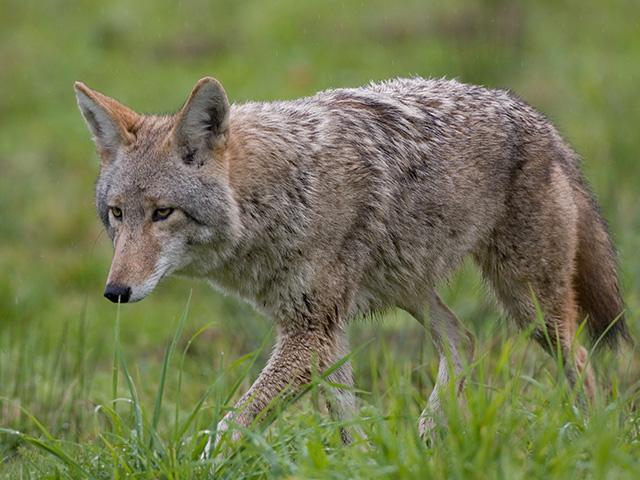Ask the Vet
Protect Cattle Feed From Canines and Contamination
READER QUESTION:
We are seeing more dogs on our farm, and often hear coyotes at night. I have found what appears to be dog manure on top of a hay bale, and now I'm wondering if I need to be worried about Neospora infecting my cows?
DR. MCMILLAN'S ANSWER:
First, let's make sure everyone knows what Neospora is. This a protozoan (single-celled organism) that can cause abortion in cattle. It has a weird life cycle, and dogs and other canines are the "definitive host." They become infected by eating cattle, deer, chicken and wildlife.
P[L1] D[0x0] M[300x250] OOP[F] ADUNIT[] T[]
In dogs, Neospora undergoes sexual reproduction, and the oocysts (protozoan eggs) are shed in the stool. These oocysts can exist in the environment for extended periods of time. Cattle can be infected from contaminated pastures, water, hay and feeds, but "vertical transmission" from dam to calf is the most common method. If an abortion does not occur, over 90% of calves born to infected dams will also be infected.
Some signs you might see if Neospora is present in the herd include premature or stillbirths, abortions (especially between 5 to 7 months) and calves born with brain disease. Any aborted or still-born calves should be necropsied. While cows do not show any signs of this infection, there is a very good serologic test to identify them.
As to prevention, the focus should be on protecting feed and water supplies from dogs and other canines. Good sanitation is essential in all feeding areas and troughs. Pasture rotation and paying attention to stocking density can also reduce the potential for environmental infection. Dead cows, dead calves and placentas should be promptly and properly disposed of. If Neospora is detected, infected cattle should be culled and only those calves kept that are from seronegative cows.
So, should you be worried? No. Your time is better spent staying laser-focused on any management areas that could affect herd reproduction. At the very top of this list is proper nutrition. Also critical is a solid biosecurity program, including the right vaccines at the right times to keep diseases out and/or prevent the preventable. Another key is a controlled breeding season. This calls for careful observation of cows in heat and noting whenever an excessive number come back into heat after being bred. At the end of the season, preg check cows to confirm pregnancy percentage. With good management, your goal should be a 90% to 95% calf crop. Anything less, or a sudden decrease in the herd pregnancy rate, demands quick and aggressive detective work.
**
Editor's Note:
Please contact your veterinarian with questions pertaining to the health of your herd or other animals. Every operation is unique, and the information in this column does not pertain to all situations. This is not intended as medical advice but is purely for informational purposes.
Write Dr. Ken McMillan at Ask the Vet, 2204 Lakeshore Dr., Suite 415, Birmingham, AL 35209, or email vet@progressivefarmer.com.
(c) Copyright 2022 DTN, LLC. All rights reserved.






